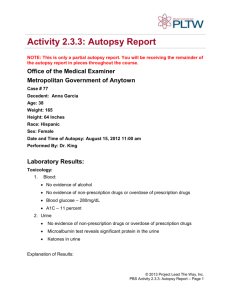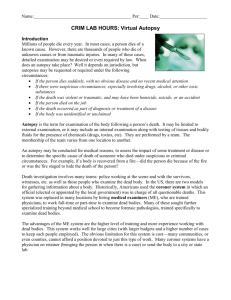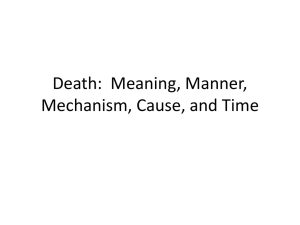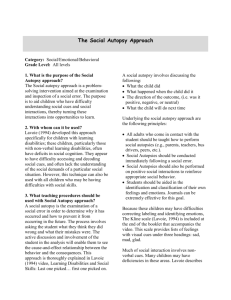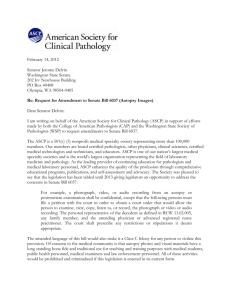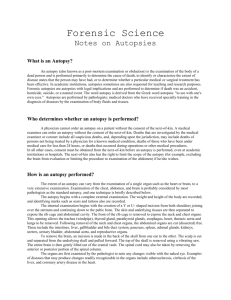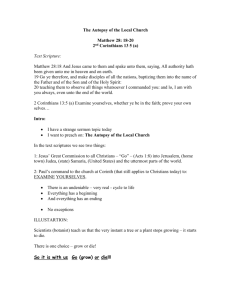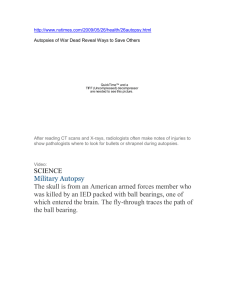Infection Control at autopsy
advertisement
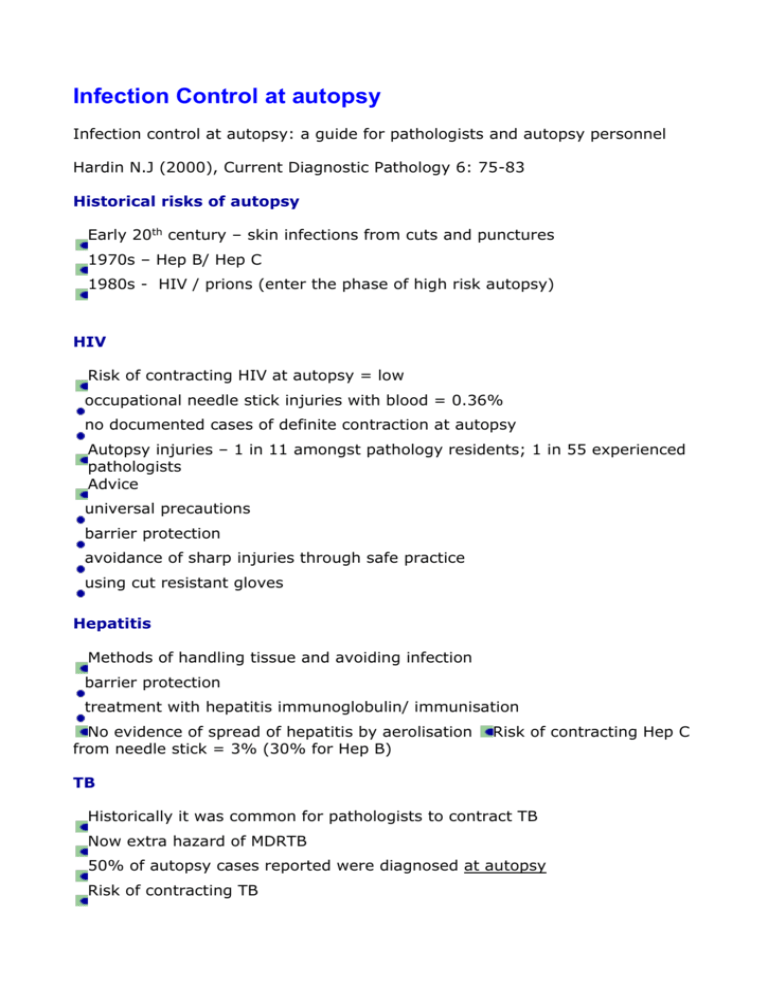
Infection Control at autopsy Infection control at autopsy: a guide for pathologists and autopsy personnel Hardin N.J (2000), Current Diagnostic Pathology 6: 75-83 Historical risks of autopsy Early 20th century – skin infections from cuts and punctures 1970s – Hep B/ Hep C 1980s - HIV / prions (enter the phase of high risk autopsy) HIV Risk of contracting HIV at autopsy = low occupational needle stick injuries with blood = 0.36% no documented cases of definite contraction at autopsy Autopsy injuries – 1 in 11 amongst pathology residents; 1 in 55 experienced pathologists Advice universal precautions barrier protection avoidance of sharp injuries through safe practice using cut resistant gloves Hepatitis Methods of handling tissue and avoiding infection barrier protection treatment with hepatitis immunoglobulin/ immunisation No evidence of spread of hepatitis by aerolisation from needle stick = 3% (30% for Hep B) Risk of contracting Hep C TB Historically it was common for pathologists to contract TB Now extra hazard of MDRTB 50% of autopsy cases reported were diagnosed at autopsy Risk of contracting TB Japan – occupational related TB 6-10 times higher for pathologists/ technicians UK – 100-200 times more likely for staff of labs/ autopsy rooms than public to develop TB Risk from fixed tissues – unclear (need adequate fixation) Suggested regime = take cultures then perfuse unseparated lungs via trachea with 10% formalin; immerse specimen in 10% formalin for 24 hours before further dissection Risks from aerolisation – need HEPA (High Efficiency Particulate Air) filters or battery powered respirators (must anticipate the need for precautions e.g. in HIV/ AIDS cases, or undiagnosed pulmonary disease where TB is a possibility) ‘. it is inconsistent to take precautions against AIDS or CJD which have a low risk of infectivity in autopsy workers, but not to take precautions against undiagnosed TB, which has an impressive infectivity rate’ Prions and CJD Made known to autopsy pathologists in late 1970s – early 1980s Risks direct inoculation (small) no evidence of aerolisation transmission of CJD considered possible Precautions autoclave instruments/ small tissue samples (1 hour at 120 C and 20 psi) 5% hypochlorite (bleach); phenols; iodine solutions and permanganate solutions are adequate disinfectants 2M NaOH for cleaning surfaces Brain only autopsies (over flat shallow pan; disposable instruments; autopsy table covered by double layer plastic sheets) Tissues for histology – 1hr immersion in 95-100% formic acid Risks – no reported case to pathologists etc in last 25 yrs Hantavirus Rodent spread Fatal pulmonary infection especially in South Western USA Follow universal precautions Use respirators (N-95/ N-100) Brain not examined Viral Haemorrhagic fevers Avoid autopsy/ limited autopsy Cover skin defects with occlusive bandage PPE Scrub suit Sleeve covers Plastic apron Cap Surgical mask Full face shield 2 pairs rubber gloves cut resistant gloves (at least 1) HEPA filter respirators (masks cost $0.44 each) – known or suspected TB General – no smoking/ eating etc Cover rib ends with disposable pads Don’t cut small pieces of tissue with fingers Exposure? – brisk clean with soap and water/ eye wash, then to occupational health/ A+E Links : Autopsy (http://www.autopsies.com) links to autopsy books courtesy of Barnes and Noble Bookstores, and other related sites. Internet Autopsy Resource Image Archive (The John Hopkins Medical Institution, Department of Pathology) - histology specimens via a search engine.


